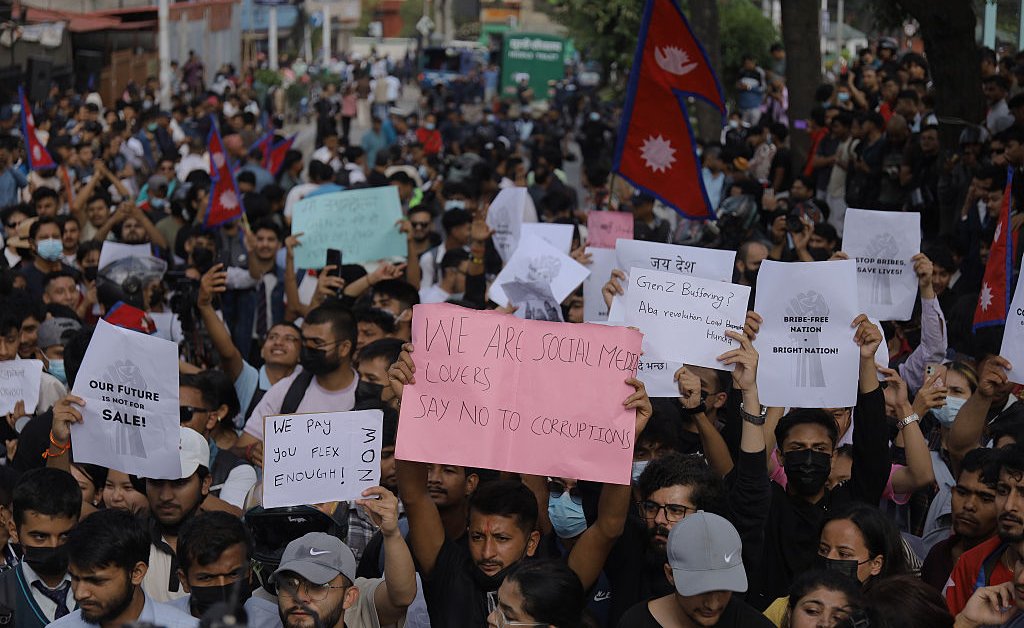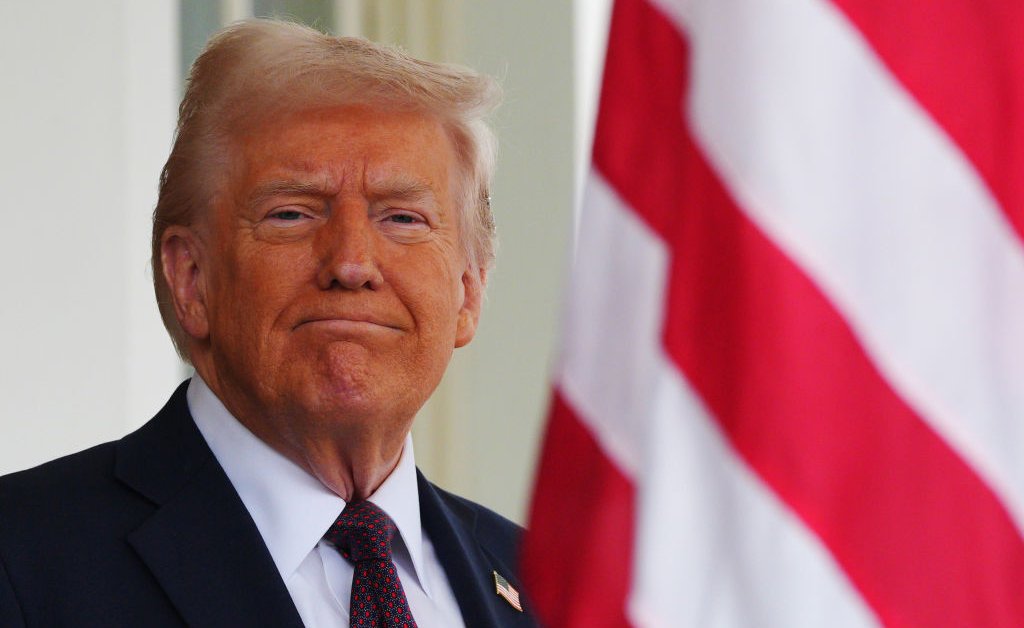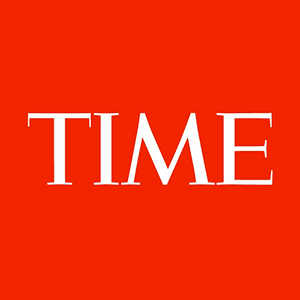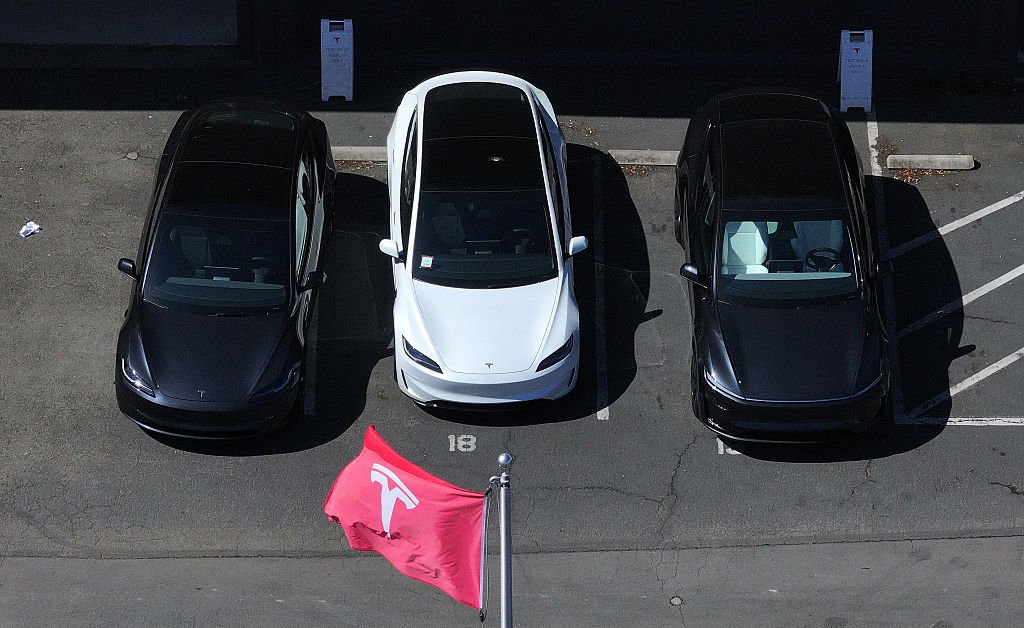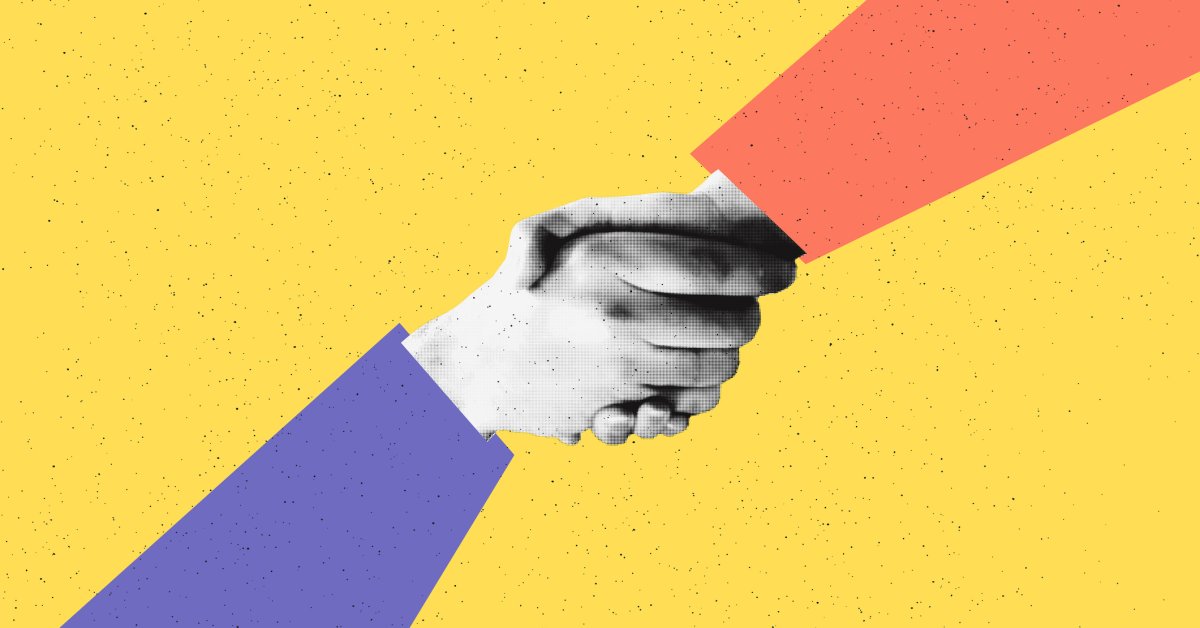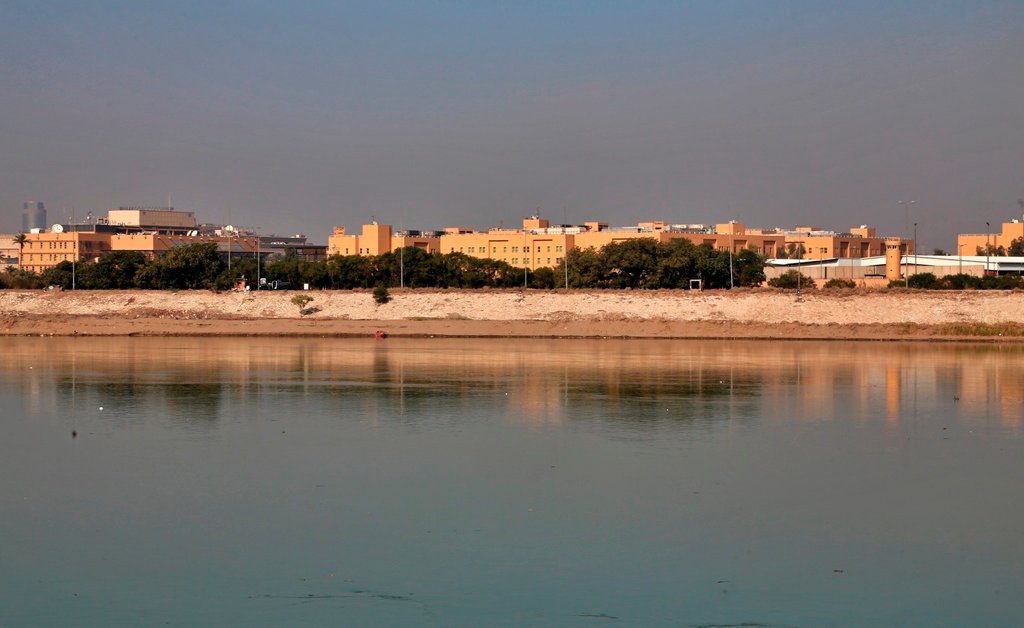At least 19 people died in protests in Nepal’s capital and other cities, after rage over a social-media shutdown and corruption led to violent clashes between the police and young demonstrators.
The so-called “Gen Z” protests are considered the most widespread in Nepal’s modern history. The protests were triggered by a government-imposed ban on Facebook and other major social-media platforms last week, just as an online movement targeting politicians and powerful figures’ “nepo kids” was forming.
Protesters stormed the Parliament in Kathmandu, and police responded with tear gas, rubber bullets, water cannons, and, according to human rights organization Amnesty International, live ammunition.
Seventeen of the at least 19 deaths were in Kathmandu, according to a police spokesperson, while two men died in protests in the southeastern city of Itahari. Local media reported that the violence also sent hundreds to hospitals for injuries nationwide.
The country’s Home Affairs Minister resigned, and the government lifted the social-media ban the day after. The government also launched a probe panel to investigate what happened in the capital. Prime Minister KP Sharma Oli claimed that the violence escalated “because of infiltration and our attempts to protect some constitutional institutions from arson and vandalism.” Authorities have since imposed curfews in the capital and other cities.
Here’s what to know about the protests.
What triggered the protests?
Social-media use in Nepal is widespread: analysis from digital advisory firm Kepios found that there were 14.3 million active social-media user identities in Nepal at the start of 2025. If each user were a distinct person, that figure would account for almost half of the country’s population.
But many social-media platforms have reportedly repeatedly rejected directives from the Nepal government to register with the country’s Ministry of Communication and Information Technology. On Sept. 29 last year, the Nepali Supreme Court ordered all social-media platforms in Nepal to register before operating so authorities could monitor “undesirable content,” with the text of the court verdict made public last month.
To comply with the order, the ministry issued a public notice to social-media platforms on Aug. 28, giving them seven days to register. If they didn’t, they would be deactivated in the country. Some companies, like TikTok and messaging platform Viber, did register before the deadline. (TikTok had previously been banned in the country to protect “social harmony,” but the ban was lifted after the company agreed to coordinate with law enforcement to address crimes related to the platform.) But others reportedly continued to ignore the order, so when the deadline passed, the government banned 26 social-media platforms, including Meta’s Facebook, WhatsApp, and Instagram.
The sweeping ban threatened to upend Facebook’s recent content monetization launch in Nepal, which could help Nepali creators earn money, and also threatened to impact other Nepali businesses that depend on social-media platforms. It also raised concerns about media freedom in the country.
What is the “nepo kid” movement?
The specter of social media going dark in Nepal also coincided with a growing online movement calling out Nepali “nepo kids.”
“Nepo kids” appears to have been borrowed from the Hollywood-popularized term “nepo baby,” which refers to the nepotistic practice of children of celebrities getting opportunities because of their familial connections.
In recent days, Nepali citizens took to platforms like TikTok and Reddit to post images and videos of the children of political leaders, including those of former Prime Ministers and ministers, according to the Kathmandu Post, who they accused of using taxpayer money to fund lavish lifestyles and foreign trips.
Those posts were shared using hashtags like #PoliticiansNepoBabyNepal, #NepoKids, and #NepoBabies. One such post on TikTok has raked in more than 1.3 million views.
It follows a similar trend in the Philippines, where the “nepo baby” children of public works contractors and officials have been shamed online for flaunting their wealth and luxury amid concerns about corruption and growing scrutiny of unfinished flood-control projects.
In Nepal, one protester told the BBC that the social-media ban served as a reason for demonstrators to gather but that the true “focus” was on broader corruption: “We want our country back—we came to stop corruption.”
Where did the protests happen?
The demonstrations started in New Baneshwar in Kathmandu, where Nepal’s Parliament sits. Apart from lifting the ban on social media, the protesters’ other demands included that the Prime Minister resign and that Nepal establish an independent watchdog body similar to an ombudsman to monitor corruption.
What began as a peaceful protest escalated after the government deployed a heavy security presence in the protest area.
Protesters also took to the streets in other municipalities, including Damak, Birtamod, Itahari, Biratnagar, Janakpur, Bharatpur, Pokhara, Birgunj, Butwal, Bhairahawa, Tulsipur, and Dhangadhi, according to the Kathmandu Post. Some of them targeted the Prime Minister’s residence in Damak.

How has the government responded?
Authorities on Monday imposed curfews in several parts of the country, including Kathmandu, Pokhara, and Itahari, according to the Himalayan Times. The Nepali Army had also been called in to back up security forces after protesters entered restricted zones and the Parliament premises.
The country’s Human Rights Commission urged restraint on how the government should address the protests. “The Constitution of Nepal and international human rights laws guarantee every individual the right to peaceful expression of dissent,” the commission said in a statement on Monday. “A democratic government must identify and address legitimate voices of citizens in a timely manner. The use of excessive force by security agencies as well as violent incidents during protests are deeply concerning.”
Gagan Kumar Thapa, general secretary of Nepal’s largest party Nepali Congress, which is part of Prime Minister Oli’s coalition government, said in a statement on Monday that Oli “must take full responsibility” over the “unwanted and violent activities that occurred during the peaceful protest,” adding that “extreme repression carried out by the government in the name of controlling the protest is condemnable and unforgivable.” Meanwhile, the main opposition party, CPN (Maoist Center), also demanded Oli’s resignation.
On Monday evening, Home Minister Ramesh Lekhak resigned, taking responsibility for the government’s deadly crackdown. Prime Minister Oli expressed sadness over the protests, saying that the government would provide monetary relief to the families of the deceased and free treatment to those injured.
On Tuesday morning, Communication Minister Prithvi Subba Gurung announced that Nepal would roll back the social-media ban and that the platforms are “working now.”Still, the protests look set to continue. Young people flouted curfews and remained demonstrating near the Parliament building on Tuesday. Some even torched Gurung’s home early Tuesday.
“Looking at this high turnout of Gen Z, I do see hope,” young protester Taya Chandra Pandey told the Kathmandu Post. “This is not being done by any political party; it’s purely driven by Gen Z. We have shown we have the power to sustain this movement.”
“We cannot stop now,” Nepali activist Priya Sigdel also told the Post: “So many innocent young ones passed away. If we stay silent, these leaders and their children will only continue with the same corrupt system. Now that the government has shown us we must die for them to listen, then we will die. But we won’t stop. Those responsible must be held accountable, and this government should resign.”

